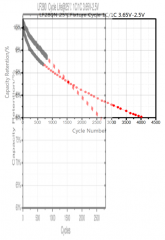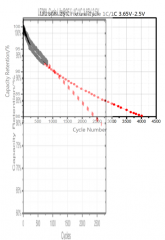Yes, whatever spring solution you elect, you will need sufficient range for full deflection.If one of three single stacks is compressed 6.9mm at 100% soc, what does it matter if it 'relaxes 2mm or 4mm, you are still in the range above the 30% defl value. Now, if it 'relaxes' 5mm, then you might drop down to between the 10 - 20 % values, but you will still be in some degree of compression. I dont see it relaxing by 5mm myself but i might be wrong. I'm waiting for a repair stud to be manufactured and delivered and its driving me crazy...cant do any testing on my pack.....covid delays...
edit....obviously if i go the route of series/parallel single stack, that pushes me out to a total of around 76mm on the rod....which would mean a bit of redesign work...will weigh up the options.
Lee Springs LHL 2000AB 01 delivers 679.1 lbs at solid (12.2psi) and has a rate of 693 lbs/inch so if gives up only 109 lbs after 4mm of decompression (meaning 10.1psi at 0% SOC).
It has a free length of 2.5” and a solid length of 1.52” (smaller than the 76mm you are considering to accommodate your Belleville washers...).






